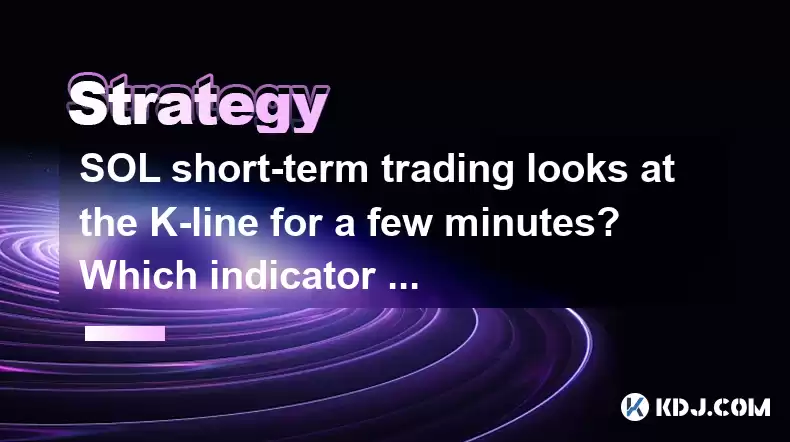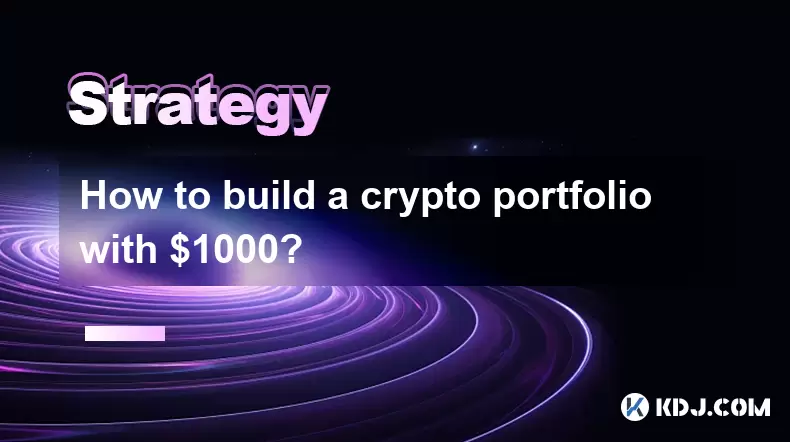-
 Bitcoin
Bitcoin $114400
1.32% -
 Ethereum
Ethereum $3499
2.20% -
 XRP
XRP $2.922
4.26% -
 Tether USDt
Tether USDt $0.0000
0.03% -
 BNB
BNB $752.6
1.53% -
 Solana
Solana $161.8
1.64% -
 USDC
USDC $0.9999
0.01% -
 TRON
TRON $0.3267
1.32% -
 Dogecoin
Dogecoin $0.1991
3.02% -
 Cardano
Cardano $0.7251
3.29% -
 Hyperliquid
Hyperliquid $38.32
3.36% -
 Stellar
Stellar $0.3972
7.58% -
 Sui
Sui $3.437
2.74% -
 Chainlink
Chainlink $16.29
3.65% -
 Bitcoin Cash
Bitcoin Cash $545.3
3.70% -
 Hedera
Hedera $0.2482
7.49% -
 Ethena USDe
Ethena USDe $1.001
0.03% -
 Avalanche
Avalanche $21.40
2.02% -
 Toncoin
Toncoin $3.579
1.56% -
 Litecoin
Litecoin $109.3
2.20% -
 UNUS SED LEO
UNUS SED LEO $8.951
-0.18% -
 Shiba Inu
Shiba Inu $0.00001220
2.75% -
 Polkadot
Polkadot $3.613
2.99% -
 Uniswap
Uniswap $9.173
3.78% -
 Monero
Monero $302.6
2.62% -
 Dai
Dai $0.0000
0.00% -
 Bitget Token
Bitget Token $4.320
1.52% -
 Pepe
Pepe $0.00001048
3.40% -
 Cronos
Cronos $0.1314
4.33% -
 Aave
Aave $259.4
3.54%
SOL short-term trading looks at the K-line for a few minutes? Which indicator combination has a higher winning rate?
Use K-line charts and indicators like MA, RSI, and Bollinger Bands to spot trends and execute SOL short-term trades with higher winning rates.
Apr 28, 2025 at 05:28 pm

Introduction to SOL Short-Term Trading
Short-term trading of Solana (SOL) involves analyzing the cryptocurrency's price movements over short periods, often ranging from a few minutes to a few hours. Traders who engage in this type of trading aim to capitalize on small price fluctuations to generate profits. One of the key tools used in this process is the K-line chart, which provides a visual representation of price movements over time. In this article, we will explore how to effectively use K-line charts for SOL short-term trading and discuss which indicator combinations can lead to a higher winning rate.
Understanding K-Line Charts for SOL
K-line charts, also known as candlestick charts, are essential for short-term traders. Each K-line represents the price movement of SOL within a specific time frame, typically a few minutes. The body of the K-line shows the opening and closing prices, while the wicks or shadows indicate the highest and lowest prices during that period.
To effectively use K-line charts for SOL short-term trading, traders need to understand the different patterns that can signal potential price movements. For instance, a bullish engulfing pattern occurs when a small bearish K-line is followed by a larger bullish K-line, suggesting a potential upward trend. Conversely, a bearish engulfing pattern indicates a possible downward trend.
Key Indicators for SOL Short-Term Trading
When trading SOL on a short-term basis, combining different technical indicators can help traders make more informed decisions. Here are some of the most commonly used indicators and their combinations:
Moving Averages (MA): These help smooth out price data to identify trends over time. The Simple Moving Average (SMA) and Exponential Moving Average (EMA) are popular choices. A common strategy is to use a short-term MA (e.g., 5-minute EMA) and a long-term MA (e.g., 20-minute SMA) to identify crossovers that signal potential entry and exit points.
Relative Strength Index (RSI): This momentum oscillator measures the speed and change of price movements. An RSI value above 70 indicates that SOL might be overbought, while a value below 30 suggests it might be oversold. Traders often look for divergences between the RSI and price to predict potential reversals.
Bollinger Bands: These consist of a middle band (usually a 20-minute SMA) and two outer bands that are standard deviations away from the middle band. When the price of SOL touches the upper band, it might be overbought, and when it touches the lower band, it might be oversold. The narrowing or widening of the bands can also indicate potential volatility changes.
Effective Indicator Combinations for SOL Short-Term Trading
To achieve a higher winning rate in SOL short-term trading, traders often combine multiple indicators to confirm signals and reduce false positives. Here are some effective combinations:
MA Crossover with RSI: This combination involves using a short-term MA and a long-term MA to identify trend changes. When the short-term MA crosses above the long-term MA, it signals a potential bullish trend, and vice versa for a bearish trend. Confirming these signals with the RSI can help traders avoid entering trades during overbought or oversold conditions.
Bollinger Bands with RSI: Traders can use Bollinger Bands to identify potential entry and exit points and the RSI to confirm these signals. For example, if the price of SOL touches the lower Bollinger Band and the RSI is below 30, it might be a good time to enter a long position. Conversely, if the price touches the upper band and the RSI is above 70, it might be a good time to exit or enter a short position.
MA Crossover with Bollinger Bands: This combination involves using MA crossovers to identify trends and Bollinger Bands to gauge volatility. When the short-term MA crosses above the long-term MA and the price is near the lower Bollinger Band, it might signal a strong bullish trend. Conversely, when the short-term MA crosses below the long-term MA and the price is near the upper Bollinger Band, it might signal a strong bearish trend.
Practical Steps for Using K-Line Charts and Indicators
To effectively use K-line charts and indicator combinations for SOL short-term trading, follow these steps:
Choose a Time Frame: Decide on the time frame for your K-line chart, such as 1-minute, 5-minute, or 15-minute intervals, based on your trading strategy.
Set Up Indicators: Add the chosen indicators to your trading platform. For example, set up a 5-minute EMA and a 20-minute SMA, an RSI with a period of 14, and Bollinger Bands with a 20-minute SMA and two standard deviations.
Analyze K-Line Patterns: Look for patterns such as bullish or bearish engulfing patterns, doji, or hammer patterns that can signal potential price movements.
Confirm with Indicators: Use the indicators to confirm the signals from the K-line patterns. For example, if you see a bullish engulfing pattern, check if the short-term MA has crossed above the long-term MA and if the RSI is not in overbought territory.
Execute Trades: Based on the confirmed signals, enter or exit trades. For example, if all indicators suggest a bullish trend, consider entering a long position.
Monitor and Adjust: Continuously monitor the price movements and adjust your positions as needed. If the indicators suggest a reversal, consider exiting your position to lock in profits or cut losses.
Risk Management in SOL Short-Term Trading
Effective risk management is crucial for success in SOL short-term trading. Here are some strategies to consider:
Set Stop-Loss Orders: Always set stop-loss orders to limit potential losses. For example, if you enter a long position at $100, you might set a stop-loss at $95 to limit your loss to 5%.
Use Proper Position Sizing: Determine the size of your positions based on your overall trading capital and risk tolerance. A common rule of thumb is to risk no more than 1-2% of your trading capital on any single trade.
Diversify Your Trades: Avoid putting all your capital into a single trade. Diversify your trades across different time frames and assets to spread risk.
Keep Emotions in Check: Short-term trading can be emotionally challenging. Stick to your trading plan and avoid making impulsive decisions based on fear or greed.
Frequently Asked Questions
Q: How often should I check my SOL short-term trades?
A: The frequency of checking your trades depends on the time frame you are using. For 1-minute or 5-minute charts, you might need to check your trades every few minutes. For 15-minute charts, checking every 5-10 minutes might be sufficient. It's important to find a balance that allows you to stay informed without becoming overwhelmed.
Q: Can I use these strategies for other cryptocurrencies besides SOL?
A: Yes, the strategies discussed in this article can be applied to other cryptocurrencies. However, each cryptocurrency may have different volatility and market dynamics, so it's important to adjust your strategies accordingly and conduct thorough research before trading.
Q: What are some common mistakes to avoid in SOL short-term trading?
A: Some common mistakes include overtrading, not setting stop-loss orders, ignoring risk management, and letting emotions drive trading decisions. It's crucial to stick to a well-thought-out trading plan and continuously learn from your experiences.
Q: How can I improve my skills in SOL short-term trading?
A: Improving your skills involves continuous learning and practice. Consider using a demo account to practice your strategies without risking real money. Additionally, staying updated with market news, analyzing your past trades, and learning from experienced traders can help you refine your approach.
Disclaimer:info@kdj.com
The information provided is not trading advice. kdj.com does not assume any responsibility for any investments made based on the information provided in this article. Cryptocurrencies are highly volatile and it is highly recommended that you invest with caution after thorough research!
If you believe that the content used on this website infringes your copyright, please contact us immediately (info@kdj.com) and we will delete it promptly.
- BCUT: Support Holds, Accumulation Hints at Potential Reversal
- 2025-08-04 10:50:12
- Bitcoin's Bullish Expansion: Decoding Bollinger Bands and Whale Bets
- 2025-08-04 10:55:12
- XRP, Solana, and Whales: Decoding the Crypto Tides
- 2025-08-04 11:10:11
- BlockDAG's Grand Finale: Auction Fever and the Dawn of a New Era
- 2025-08-04 10:30:12
- Kaia Files: Will South Korea Embrace a KRW-Pegged Stablecoin?
- 2025-08-04 10:30:12
- Kaspa, HBAR, and Cold Wallet: A New York Minute on Crypto's Latest Moves
- 2025-08-04 09:11:54
Related knowledge

How to avoid common crypto investment mistakes?
Jul 13,2025 at 01:35am
Understanding the Risks of Crypto InvestmentInvesting in cryptocurrency can be highly rewarding, but it also comes with significant risks. One of the ...

What is a long-short crypto strategy?
Jul 15,2025 at 10:56am
Understanding the Basics of a Long-Short Crypto StrategyA long-short crypto strategy is an investment approach where traders simultaneously take long ...

What is a long-short crypto strategy?
Jul 11,2025 at 01:28pm
Understanding the Basics of Long-Short Crypto StrategyA long-short crypto strategy is an investment approach where traders take both long and short po...

How to use the RSI indicator for crypto?
Jul 12,2025 at 03:56pm
Understanding the RSI Indicator in Cryptocurrency TradingThe Relative Strength Index (RSI) is a momentum oscillator used to measure the speed and chan...

Is copy trading a good strategy for crypto beginners?
Jul 12,2025 at 08:28am
Understanding Copy Trading in the Cryptocurrency MarketCopy trading is a strategy where novice traders replicate the trades of experienced investors a...

How to build a crypto portfolio with $1000?
Jul 13,2025 at 08:14pm
Understanding the Basics of Cryptocurrency InvestmentBuilding a crypto portfolio with $1000 starts with understanding the fundamentals of cryptocurren...

How to avoid common crypto investment mistakes?
Jul 13,2025 at 01:35am
Understanding the Risks of Crypto InvestmentInvesting in cryptocurrency can be highly rewarding, but it also comes with significant risks. One of the ...

What is a long-short crypto strategy?
Jul 15,2025 at 10:56am
Understanding the Basics of a Long-Short Crypto StrategyA long-short crypto strategy is an investment approach where traders simultaneously take long ...

What is a long-short crypto strategy?
Jul 11,2025 at 01:28pm
Understanding the Basics of Long-Short Crypto StrategyA long-short crypto strategy is an investment approach where traders take both long and short po...

How to use the RSI indicator for crypto?
Jul 12,2025 at 03:56pm
Understanding the RSI Indicator in Cryptocurrency TradingThe Relative Strength Index (RSI) is a momentum oscillator used to measure the speed and chan...

Is copy trading a good strategy for crypto beginners?
Jul 12,2025 at 08:28am
Understanding Copy Trading in the Cryptocurrency MarketCopy trading is a strategy where novice traders replicate the trades of experienced investors a...

How to build a crypto portfolio with $1000?
Jul 13,2025 at 08:14pm
Understanding the Basics of Cryptocurrency InvestmentBuilding a crypto portfolio with $1000 starts with understanding the fundamentals of cryptocurren...
See all articles

























































































